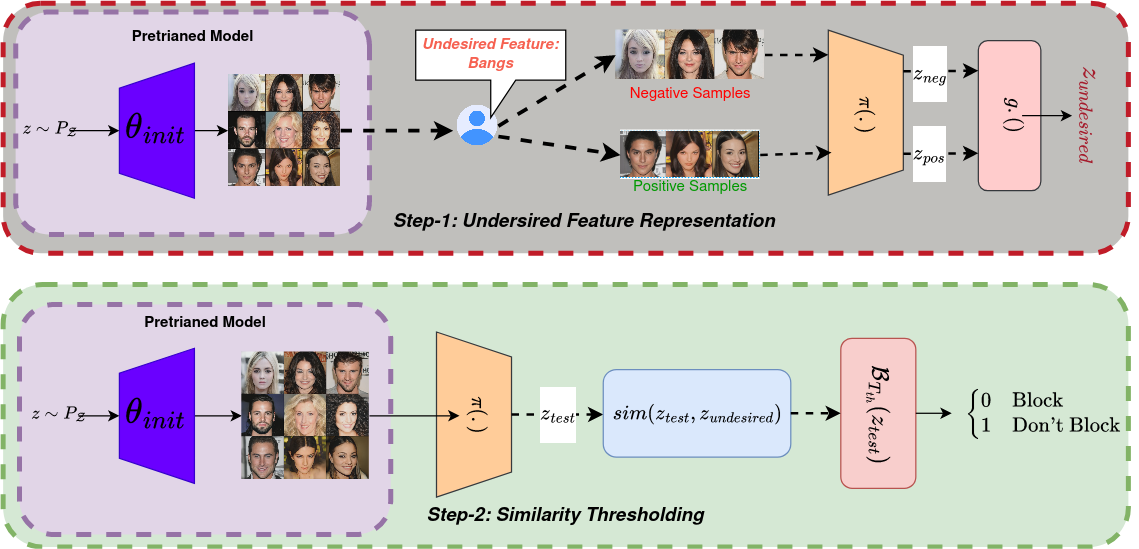Modern machine unlearning approaches typically assume access to model parameters and architectural details during unlearning, which is not always feasible. In multitude of downstream tasks, these models functionas black-box systems, with inaccessible pre-trained parameters, architectures, and training data. In such scenarios, the possibility of filtering undesired outputs becomes a practical alternative. The primary goal of this study is twofold: first, to elucidate the relationship between filtering and unlearning processes, and second, to formulate a methodology aimed at mitigating the display of undesirable outputs generated from models characterized as black-box systems. Theoretical analysis in this study demonstrates that, in the context of black-box models, filtering can be seen as a form of weak unlearning. Our proposed Feature Aware Similarity Thresholding(FAST) method effectively suppresses undesired outputs by systematically encoding the representation of unwanted features in the latent space.
The primary objective of filtering is to prevent the display of samples that exhibit specific undesired features. In this context, we explore two distinct unlearning settings:
-
Class-level Filtering: For this setting, we utilize the MNIST dataset (LeCun et al., 1998), which comprises 60,000 28 × 28 black and white images of handwritten digits. Aiming to achieve class-level filtering, we have used pre-trained DC-GAN on MNIST. Specifically, we focus on filtering out two digit classes: 5 and 8.
-
Feature-level Filtering: In this scenario, we turn to the CelebA-HQ dataset (Liu et al., 2015), which contains 30,000 high-quality RGB celebrity face images with dimensions of 256×256. For this, we have taken state-of-the-art StyleGAN2 pre-trained of CelebA-HQ. Here, we target the feature-level filtering of subtle features, specifically (a) Bangs and (b) Hats.
We provide evaluations of different filtering methods on the MNIST and CelebA-HQ datasets, respectively.We observe that our proposed methods give better Recall and AUC values for both datasets while comparable to superior performance for other metrics.
